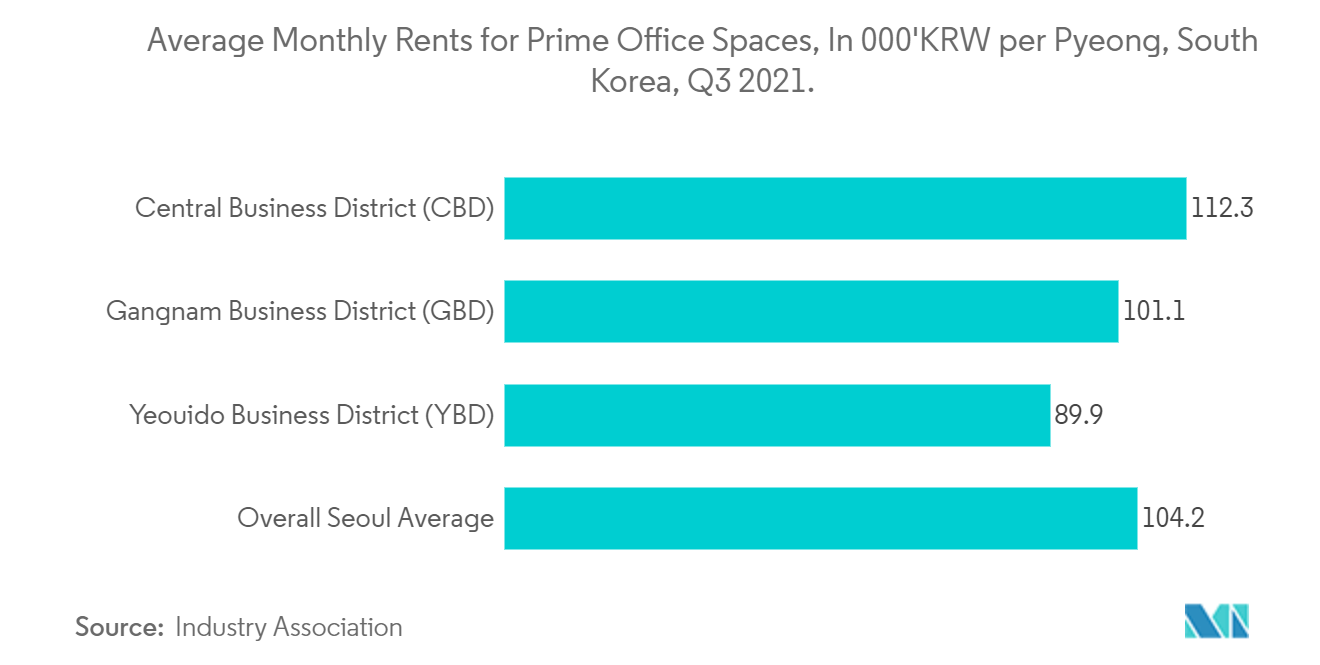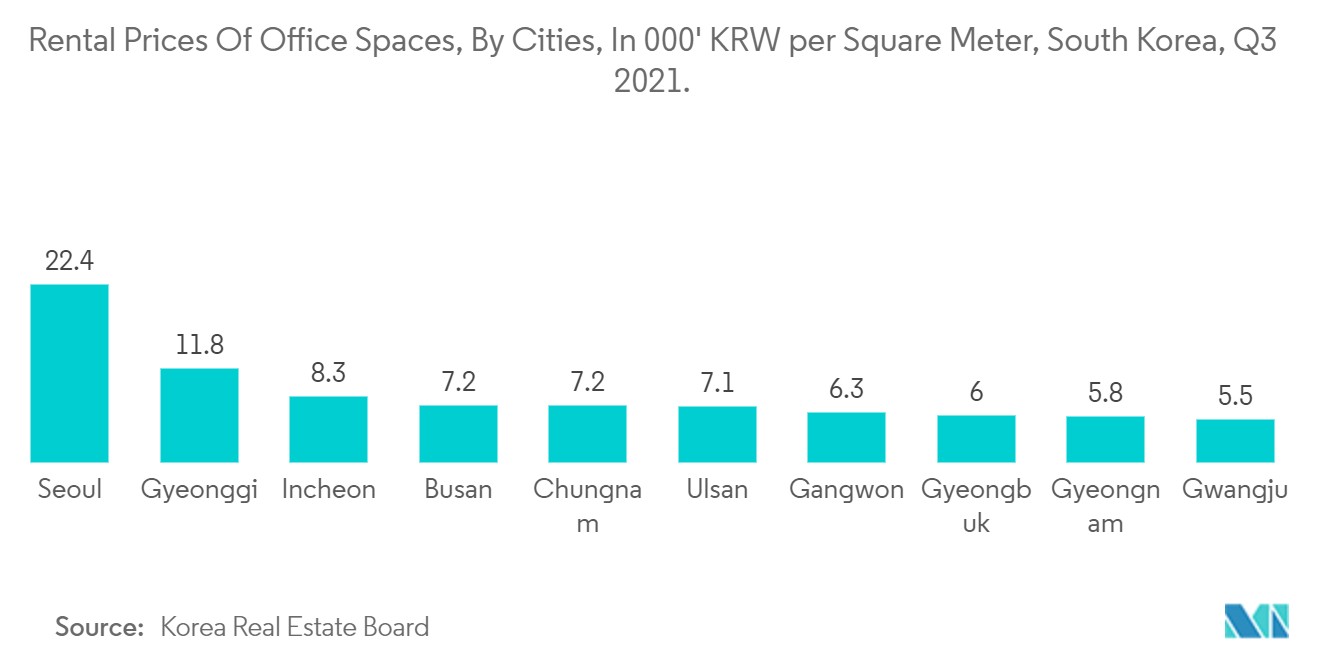Market Trends of South Korea Office Real Estate Industry
This section covers the major market trends shaping the South Korea Office Real Estate Market according to our research experts:
Increasing Demand for Prime Office Spaces
Most of the demand for prime office spaces is observed in Seoul. In Q3 2021, the prime office vacancy rate fell by 1.9 ppts quarter-on-quarter to 9.9%. Also, net absorption increased by 163,200 sq.m on higher demand across all districts. Major business districts such as Central Business District (CBD), Gangnam Business District (GBD), and Yeouido Business District (YBD) absorbed most of the prime office spaces in the city.
In Central Business District, the vacancy rate fell by 1.1 ppts quarter-on-quarter to 11.2% in Q3 2021. In addition, net absorption rose by 66,700 sq.m despite the supply of 41,700 sq.m from K-Square Citi. However, high tenant preferences in GBD resulted in increasing net absorption space by 28,400 sq.m, and the vacancy rate declined by 8% in Q3 2021. Moreover, net absorption increased to 66,800 sq.m in YBD as tenants continued to move into new buildings supplied last year, further reducing vacancy by 4.0 ppts quarter-on-quarter to 11.9%.
However, in Q3 2021, the new office space supply increased as K-Square Citi finished remodeling in CBD, adding 41,700 sq.m of new supply. Meanwhile, Woongjin Group and Loca Mobility moved into K-Square after preleasing 40% of the building in Q2. Furthermore, average annual rents in CBD, GBD, and YBD experienced annual growth rates of 1.3%, 1.5%, and 2.7%, respectively.

Increasing Rental Prices of Office Spaces
The pandemic significantly impacted the South Korean office market. However, the market is recovering, with significant growth observed in office absorption in 2021. Rental prices for office spaces have been witnessing positive growth after the pandemic. Rising rental prices are driven by declining vacancy rates and increasing demand for office spaces from tech tenants, which are mainly expanding in the Gangnam area, the CBD, and Yeouido Business District.
Moreover, in Gangnam Business District, Grade A office spaces recorded a low vacancy rate in Q3 2021, as Centerfield, which was completed in Q1 2021, leased out its available space, signing a contract with Amazon. In addition, 10 floors vacated by Samsung Fire & Marine Insurance in The Asset Gangnam Tower were filled by PeopleFund and Naver. In the GBD area, not many options are available for tech tenants looking for Grade A office space, resulting in rising rental prices.
According to the Korea Real Estate Board statistics, Seoul and Gyeonggi provinces are leading in South Korea in terms of office space rental prices. In Q3 2021, the rental prices of office buildings in Seoul and Gyeonggi amounted to around KRW 22,400 per sq.m and KRW 11,800 per sq.m, respectively.


